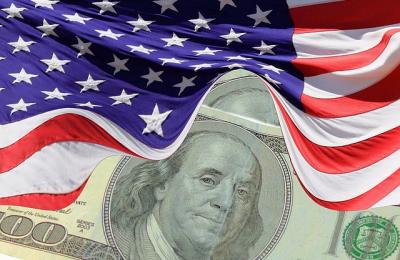At least in theory, the question of how high interest rates affect household spending in an economy is surprisingly difficult. After all, every interest earned by the borrower is the borrower’s income and ultimately benefits another family. Even at the micro level, the same household usually has both savings and credit.
In practice, applied economists rely on rules of thumb that are closer to popular intuition. There are good reasons for this, as “Chart of the Week” shows. In recent decades, recessions have generally been followed by increases in interest payments relative to disposable household income. After a sharp rise in interest rates over the past two years, the ratio is now approaching levels that signal trouble ahead.
“But not so soon,” says Christian Sherman, U.S. economist at DWS: “We continue to expect a recession in the U.S. — probably very soon — and the overall picture for the finances of private households in the U.S. is not too bad. At least not yet.” A key contrast is labor markets, which are already showing signs of weakness, while wage growth will cool further. This will increase pressure on low-income borrowers — a group that relies heavily on credit card debt and other unsecured loans. For example, credit card delinquency rates have risen sharply, although they remain below pre-2007 levels or levels during the financial crisis that followed. At the same time, credit card debt levels have begun to decline. The volume of car loans and other consumer loans is already declining.
This indicates that household behavior is already changing. While credit rationing may play some role for remaining creditworthy borrowers, households who can afford it will prioritize paying off expensive credit card debt or auto loans. Of course, this comes at the cost of overall consumption. Taking new loan funds on existing residential properties has now become very expensive. Finally, in the United States, as elsewhere, some sources of debt entrapment, particularly in very low-income households, such as rent arrears or utility bills, are difficult to track.
Of course, many experts are uncertain about the immediate outlook, especially since housing finance data is still dominated by an epidemic of excess savings resulting from government austerity.
Given that most of these savings (about 70% according to deposit statistics) belong to the top 20% of household incomes, the question of when exactly these savings will be used may play a lesser role. Less discussed, but perhaps equally relevant, is behavior change. The recent rise in inflation and interest rates must have been a particularly rude awakening for many younger families struggling with student debt.
From Börse Express PDF as of November 27, 2023
Would you like to keep Börse Express PDF in your mailbox?
Order here for free and without obligation

“Friend of animals everywhere. Web guru. Organizer. Food geek. Amateur tv fanatic. Coffee trailblazer. Alcohol junkie.”






More Stories
Australia returns to the MXGP World Championship next season.
Airplane noise in Australia: Man complains 21,000 times
First arrest in Britain under Rwanda plot